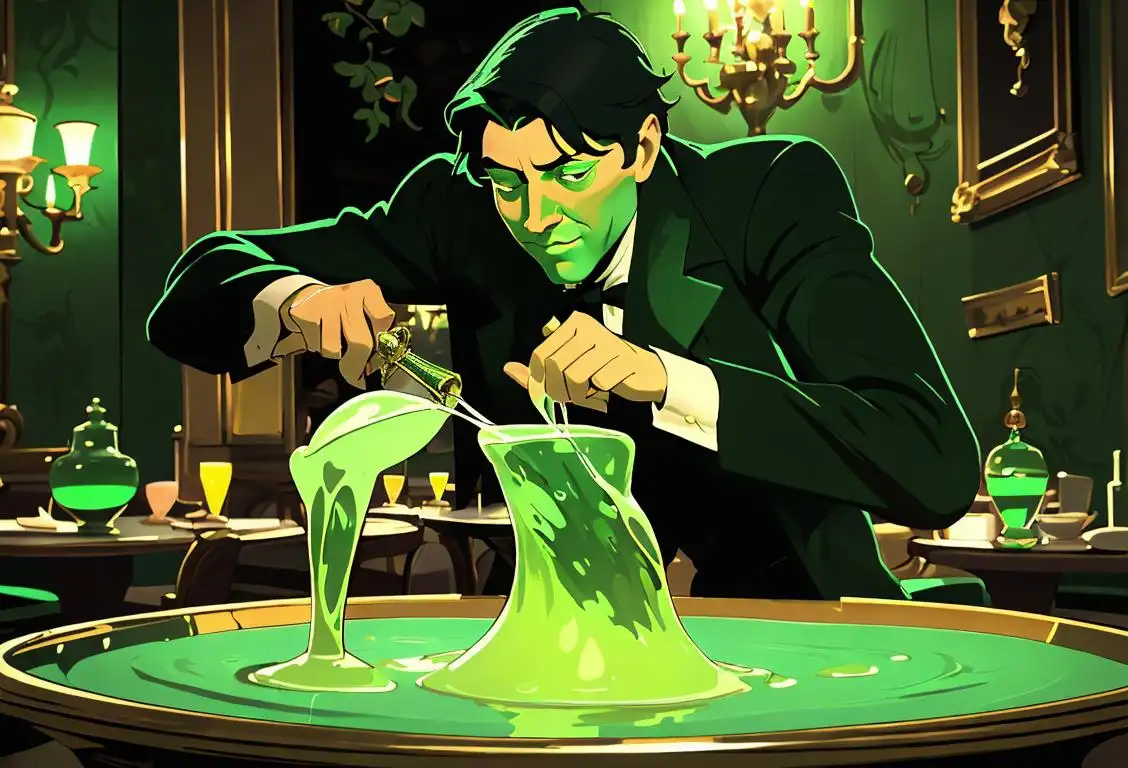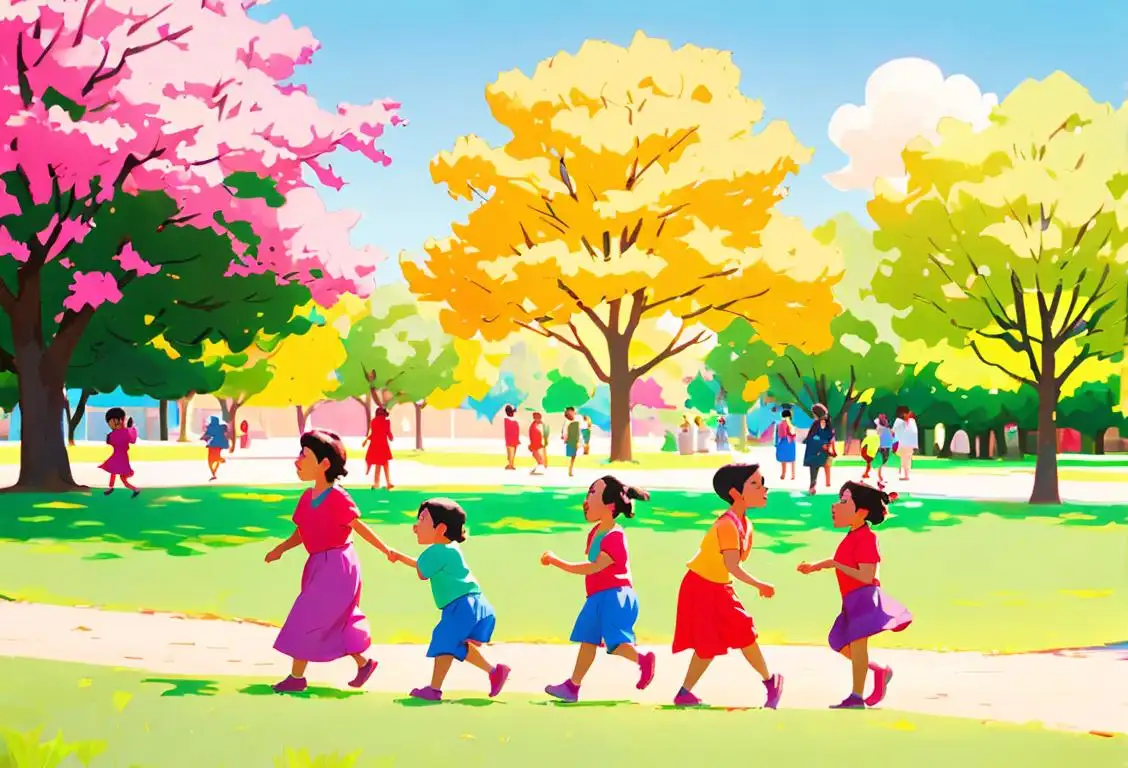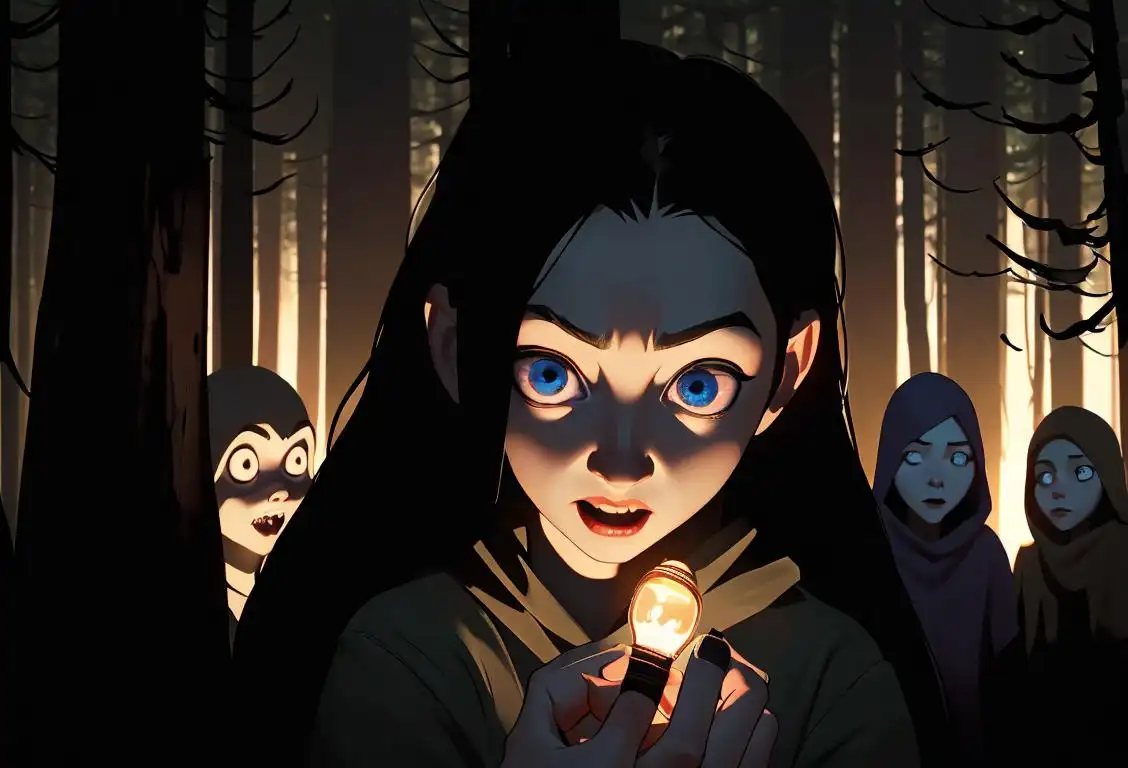National Absinthe Day

Welcome to the wonderful world of National Absinthe Day! Prepare to embark on a journey filled with enchantment, mystery, and a touch of that green fairy magic. Whether you're a seasoned absinthe connoisseur or simply curious about this intriguing beverage, this article will be your guide to all things absinthe-related. So grab your louche spoon and get ready to indulge in the history, lore, and unique characteristics of this celebrated spirit.
When is Absinthe Day?
It's national absinthe day on the 5th March.
A Brief History of Absinthe
Pour yourself a glass of history as we delve into the origins of absinthe. Jazz hands, please! Absinthe was first distilled in the late 18th century by a French doctor named Pierre Ordinaire. Legend has it that Ordinaire used wormwood, an herb known for its therapeutic properties, to create a magical elixir. Little did he know that his creation would become the green elixir of choice for artists, writers, and bohemians alike.
As absinthe gained popularity, it became associated with the bohemian lifestyle. Think Parisian cafés, smoky jazz clubs, and artistic inspiration. In the late 19th and early 20th centuries, absinthe became the muse of renowned artists such as Vincent van Gogh, Pablo Picasso, and Oscar Wilde. These creative souls were drawn to the mystical allure of absinthe, believing it could ignite their imaginations and free their artistic spirits.
However, this green fairy had its dark side. Absinthe was blamed for all sorts of scandals, from hallucinations to criminal behavior. It was even banned in several countries, including the United States and much of Europe, during the early 20th century. This prohibition only added to its enigmatic charm, making absinthe even more alluring to those who dared to dance with the green fairy.
The Absinthe Ritual
Now that you know a bit about the history, it's time to learn about the absinthe ritual. Think of it as a whimsical dance between you and the green fairy. The traditional absinthe ritual involves ice-cold water, a sugar cube, and a fancy slotted spoon. Pour a measure of absinthe into a glass, place the spoon on top, and balance the sugar cube on the spoon.
As the water slowly trickles over the sugar cube, it dissolves and mingles with the absinthe, creating a mesmerizingly cloudy concoction. This process is called louching, and it enhances the aromatic and flavor profile of the absinthe. It's a theatrical experience that adds an element of magic to the enjoyment of this captivating libation.
Fun Fact: The Green Fairy
Did you know that absinthe is often referred to as the 'Green Fairy'? No, it's not because it grants wishes or sprinkles fairy dust. The nickname originates from the vibrant green color of absinthe and its reputation for inducing hallucinations. So, the next time you raise a glass of absinthe, remember to toast to the enchanting Green Fairy!
History behind the term 'Absinthe'
15th century
Medieval Origins
Absinthe has its roots in medicinal herbs and recipes dating back to the 15th century. Monks and alchemists in the Alpine region were known to have experimented with infusions and tinctures made from various botanicals. These concoctions later evolved into what is known as absinthe.
18th century
The Rise of Absinthe
The popularity of absinthe began to surge in the late 18th century, particularly in France. The Green Fairy, as it was often called, became the drink of choice among artists, writers, and bohemian communities. Its emerald green color and distinctive flavors captured the imagination of many, leading to its association with creativity and inspiration.
19th century
Absinthe Craze
During the 19th century, absinthe reached the height of its popularity. It became a social phenomenon, especially in the bustling cafes of Paris. The drink's association with the intellectual and artistic circles of the time only fueled its allure. However, this period also saw the rise of public concern regarding absinthe's potential negative effects on health and behavior.
1915
Banned in Many Countries
In 1915, several countries, including Switzerland, France, and the United States, banned the production and sale of absinthe. Concerns over the alleged dangers of absinthe, such as hallucinatory effects and its addictive nature, led to the prohibition. The ban lasted for several decades, effectively reducing the drink's popularity and availability.
1990s
Absinthe Revival
In the 1990s, absinthe experienced a revival as a result of efforts to overturn the ban. Scientists reevaluated the misconceptions surrounding the drink, debunking the myths that led to its prohibition. Reforms in regulations and a growing interest in traditional brewing methods allowed absinthe to regain its legal status in many countries. Today, it is once again enjoyed by connoisseurs and enthusiasts around the world.
Did you know?
According to legend, absinthe was rumored to produce hallucinations and visions, leading artists to believe they were being visited by creative spirits. Talk about a collaboration with the supernatural!Tagged
nsfw funFirst identified
4th March 2016Most mentioned on
5th March 2016Total mentions
938Other days
Children Day
Awareness Day
Intelligence Richard Grenell Has Declassified A Mysterious Inauguration Day
Nightmare Just Day
Opposite Day
One Day
Happiness Day
Kisses Day
Stormy Daniels Day
Frappe Day









